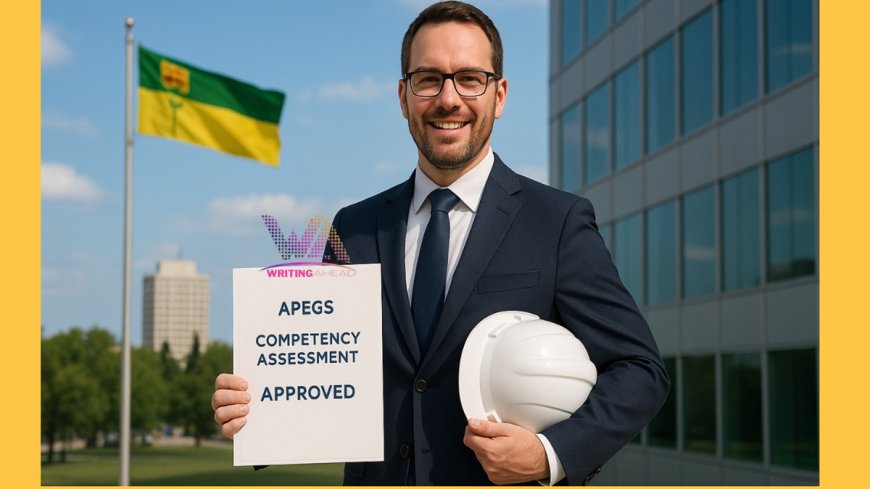How to Prepare a Successful APEGS Competency-Based Assessment Submission
Discover simple, practical tips for writing your apegs competency assessment and learn how to handle a competency based assessment in long form confidently.

Simple advice from someone who understands the process
Starting your APEGS journey?
If youre applying to become a licensed engineer in Saskatchewan, Canada, youll need to complete the apegs competency assessment. When I first looked into it, I thought it was just a standard form or checklist. But I soon realised its actually a competency based assessment, which means its more about telling your professional story clearly and honestly.
If youre feeling unsure where to start, heres what Ive learned about preparing a strong submissionwritten simply, just like Id share with a friend.
What is an apegs competency assessment?
The apegs competency assessment is part of the licensing process by the Association of Professional Engineers and Geoscientists of Saskatchewan (APEGS). Instead of relying only on years of experience, it asks you to show specific competencies: your skills, decisions, and understanding of engineering principles.
Its called a competency based assessment in long form because you dont just tick boxesyou write short narratives (about 200250 words each) explaining real projects youve worked on, focusing on what you did, why, and what you learned.
Step 1: Understand the competencies first
Before you start writing, read the list of required competencies carefully. These are grouped into categories like:
? Technical competence
? Communication
? Project and financial management
? Team effectiveness
? Professional accountability
Understanding what each competency actually asks for will help you pick the best examples from your work.
Step 2: Choose real projects that match the competencies
Dont worry about picking the biggest or most complex project. What matters is choosing projects where:
-
Your role was clear
-
You made decisions, not just followed instructions
-
You can explain the reasoning behind those decisions
Even smaller projects can show strong evidence if you clearly describe your part.
Step 3: Use I instead of we
One thing I noticed many people struggle with in the apegs competency assessment is writing about their own work. Assessors want to see what you did, not what the team or company did.
Use phrases like:
-
I designed
-
I reviewed
-
I identified and solved
This keeps your submission focused on your personal contribution.
Step 4: Keep it short, clear, and honest
Each narrative should be around 200250 words. You dont need long technical explanations. Focus on:
-
What the challenge was
-
What action you took
-
Why you made that choice
-
What the result was or what you learned
Simple language is better than complicated words. The goal is clarity, not to sound overly formal.
Step 5: Show depth and reflection
A good competency based assessment in long form isnt just about listing tasks. Its about showing that you understand why your work matters.
Try to include lines like:
-
I chose this approach because
-
From this project, I learned
-
This experience helped me improve how I
These reflections prove youre thinking like a professional engineer.
Step 6: Work closely with your validators
Youll need validatorssenior engineers who can confirm your examples. Choose people who really know your work, and share your drafts with them early.
This helps them remember the projects you mention and makes their validation process smoother.
Step 7: Check and revise
Before you submit, read your narratives out loud. Make sure each one:
-
Matches the correct competency
-
Explains your personal role clearly
-
Is free of grammar or spelling mistakes
If possible, ask a colleague to review your answersthey might spot areas where you could be clearer.
My personal tips
? Dont wait until the last minutewriting thoughtfully takes time
? Keep a simple document with all your projects, roles, and dates; it helps a lot when writing
? Remember the assessment isnt about being perfect; its about being honest and professional
Why it matters
Completing the apegs competency assessment isnt just a formality. It helps you reflect on your own journey and shows assessors that you:
-
Understand engineering principles
-
Can communicate your work clearly
-
Take responsibility for your decisions
This is what truly makes you ready to be licensed as a professional engineer in Saskatchewan.
Final thoughts
Preparing a successful competency based assessmentmight feel overwhelming at firstbut when you break it down, its really about telling your real story as an engineer.
Use clear, honest language. Focus on what you did and why. And remember: its not about writing the perfect answerits about showing assessors how you think and work as a professional.
In the end, its your experience that matters most. Tell it confidently, and youre already halfway there.




























